Related Research Articles

Aphrodite is an ancient Greek goddess associated with love, lust, beauty, pleasure, passion, procreation, and as her syncretized Roman goddess counterpart Venus, desire, sex, fertility, prosperity, and victory. Aphrodite's major symbols include seashells, myrtles, roses, doves, sparrows, and swans. The cult of Aphrodite was largely derived from that of the Phoenician goddess Astarte, a cognate of the East Semitic goddess Ishtar, whose cult was based on the Sumerian cult of Inanna. Aphrodite's main cult centers were Cythera, Cyprus, Corinth, and Athens. Her main festival was the Aphrodisia, which was celebrated annually in midsummer. In Laconia, Aphrodite was worshipped as a warrior goddess. She was also the patron goddess of prostitutes, an association which led early scholars to propose the concept of "sacred prostitution" in Greco-Roman culture, an idea which is now generally seen as erroneous.
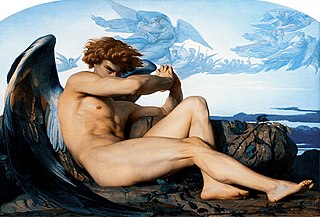
The most common meaning for Lucifer in English is as a name for the Devil in Christian theology. It appeared in the King James Version of the Bible in Isaiah and before that in the Vulgate, not as the name of a devil but as the Latin word lucifer (uncapitalized), meaning "the morning star", "the planet Venus", or, as an adjective, "light-bringing". It is a translation of the Hebrew word הֵילֵל, hêlēl,.

Venus is a Roman goddess, whose functions encompass love, beauty, desire, sex, fertility, prosperity, and victory. In Roman mythology, she was the ancestor of the Roman people through her son, Aeneas, who survived the fall of Troy and fled to Italy. Julius Caesar claimed her as his ancestor. Venus was central to many religious festivals, and was revered in Roman religion under numerous cult titles.

Erotic literature comprises fictional and factual stories and accounts of eros intended to arouse similar feelings in readers. This contrasts erotica, which focuses more specifically on sexual feelings. Other common elements are satire and social criticism. Much erotic literature features erotic art, illustrating the text.

Sir William Huggins was a British astronomer best known for his pioneering work in astronomical spectroscopy together with his wife, Margaret.

Astarte is the Hellenized form of the Ancient Near Eastern goddess ʿAṯtart. ʿAṯtart was the Northwest Semitic equivalent of the East Semitic goddess Ishtar.
Teleny, or, The Reverse of the Medal, is a pornographic novel, first published in London in 1893. The authorship of the work is unknown. There is a consensus that it was an ensemble effort, but it has often been attributed to Oscar Wilde. Set in fin-de-siècle Paris, its concerns are the magnetic attraction and passionate though ultimately tragic affair between a young Frenchman named Camille Des Grieux and the Hungarian pianist René Teleny. The novel is one of the earliest pieces of English-language pornography that focuses explicitly and near-exclusively on homosexuality. Its lush and literate, though variable, prose style and the relative complexity and depth of character and plot development share as much with the aesthetic fiction of the period as with its typical pornography.
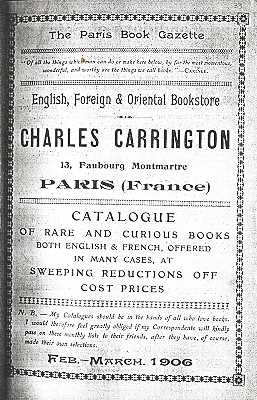
Charles Carrington (1857–1921) was a leading British publisher of erotica in late-19th- and early-20th-century Europe. Born Paul Harry Ferdinando in Bethnal Green, England on 11 November 1867, he moved in 1895 from London to Paris where he published and sold books in the rue Faubourg Montmartre and rue de Chateaudun; for a short period he moved his activities to Brussels. Carrington also published works of classical literature, including the first English translation of Aristophanes' "Comedies," and books by famous authors such as Oscar Wilde and Anatole France, in order to hide his "undercover" erotica publications under a veil of legitimacy. His books featured the erotic art of Martin van Maële. He published a French series La Flagellation a Travers le Monde mainly on English flagellation, identifying it as an English predilection.
William Dugdale was an English publisher, printer, and bookseller of politically subversive publications and pornographic literature in England during the 19th century. By the 1850s he had become "the principal source of such publications in the country". Despite the numerous police raids on his shops and spending many years in prison he remained in the book trade for over forty years.
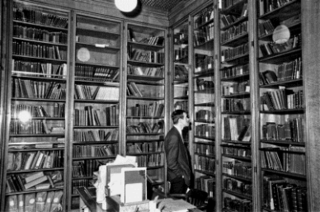
The Private Case is a collection of erotica and pornography held initially by the British Museum and then, from 1973, by the British Library. The collection began between 1836 and 1870 and grew from the receipt of books from legal deposit, from the acquisition of bequests and, in some cases, from requests made to the police following their seizures of obscene material.
This is a list of August Strindberg's written works.
George Reginald Bacchus (1874–1945) was an English writer. He wrote a number of erotic books published by the Erotika Biblion Society.
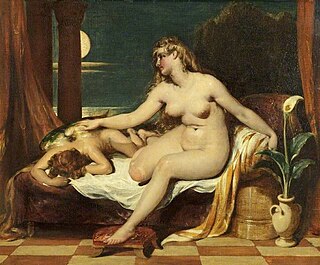
The Dawn of Love, also known as Venus Now Wakes, and Wakens Love, is an oil painting on canvas by English artist William Etty, first exhibited in 1828 and currently in the Russell-Cotes Art Gallery & Museum in Bournemouth. Loosely based on a passage from John Milton's 1634 masque Comus, it shows a nude Venus leaning across to wake the sleeping Love by stroking his wings. While Etty often included nude figures in his work, he rarely depicted physical intimacy, and owing to this, The Dawn of Love is one of his more unusual paintings. The open sensuality of the work was intended to present a challenge to the viewer mirroring the plot of Comus, in which the heroine is tempted by desire but remains rational and detached.

Glimmande Nymf! blixtrande öga!, is a song by the Swedish poet and performer Carl Michael Bellman from his 1790 collection, Fredman's Epistles, where it is No. 72. It is subtitled "Lemnad vid Cajsa Lisas Säng, sent om en afton", and set to a melody by Egidio Duni. A night-piece, it depicts a Rococo muse in the Ulla Winblad mould, asleep in her bed in Stockholm, complete with allusions to both classical and Nordic mythology.

Esaias Tegnér Jr. was a Swedish linguist. He was professor of eastern languages at Lund University 1879-1908, lead editor of Svenska Akademiens ordbok 1913-1919, member of the Bible Commission 1884-1917, and member of the Swedish Academy from 1882 onward. Tegnér was the grandson of the well-known poet Esaias Tegnér, also his namesake, and was brother-in-law to the poet and composer Alice Tegnér.
A gubernaculum in classical references describes a ship's rudder or steering oar. The English word government is related to the word. The Old English word governail and the Scots word gouernaill are both derived from it.
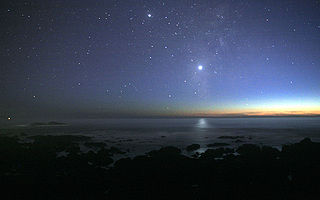
Venus, as one of the brightest objects in the sky, has been known since prehistoric times and has been a major fixture in human culture for as long as records have existed. As such, it has a prominent position in human culture, religion, and myth. It has been made sacred to gods of many cultures, and has been a prime inspiration for writers and poets as the morning star and evening star.

Läsare or the Reader movement was a Swedish Pietistic Christian revival movement of people who stressed the importance of reading, that is, reading the Bible and other Christian literature. It was influenced by both the Herrnhuters and the Methodists and has been described by scholar George M. Stephenson as a "second religious reformation in Sweden".